The X Button
Kickstarting Points
by Todd Ciolek,

Before we get to the video-game grit and nit, I'd like to point out this cartoon by artist, author, and fellow ANN columnist Shaenon K. Garrity. It's about women in the game industry. Several game industries, actually.
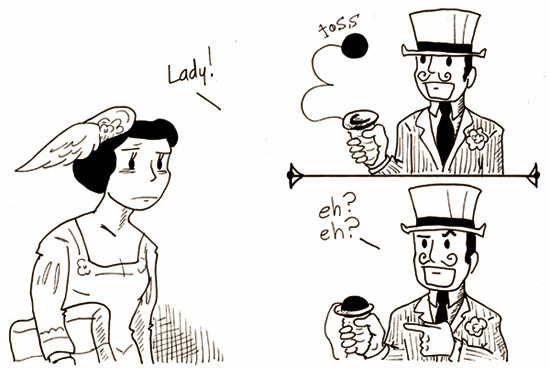
Followers of game-related news will note that just about every scene is based on a real-life incident or a common occurrence regarding the video-game market's attitude toward women. It's amusing, accurate, and downright depressing.
Can't blame that guy for selling ball-catchers, though. They're the Tetris of old-fashioned merriment mechanisms.
NEWS
DRAKENGARD 3 GETS A BIG SPECIAL EDITION, EXTRA EPISODES
Drakengard 3 encroaches slowly upon North America. For a while, it was unclear if the game's bloodshed and debauchery would get a limited release or a digital-only launch. Square Enix now seems committed to a deluxe Drakengard 3, at least on their online store. And at least for North America. Europe just gets a digital release.
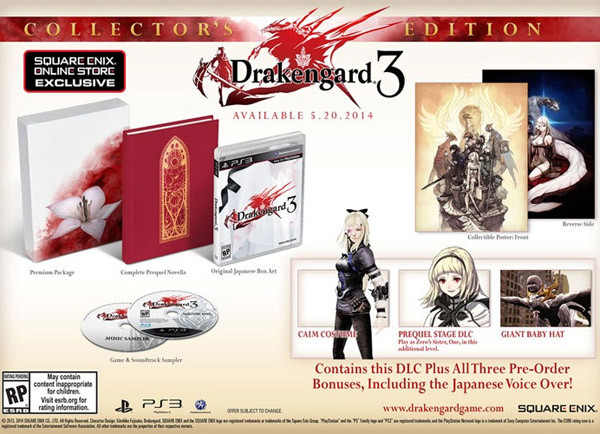
The Drakengard 3 Collector's Edition includes a double-sided poster, a soundtrack, a gaudy outer package, and a novella featuring the various prequel stories about murderous Intoner goddess Zero and her similarly number-coded sisters. The set also packs in a costume that dresses Zero like the first Drakengard's anti-hero Caim, a hat that dresses Zero's dragon pal Mikhail like the creepy Watcher-babies, and a special stage that lets players control Zero's brainiest deity-sibling, One. Not bad, but where's the artbook that came with the Japanese special edition? Kimihiko Fujisaka's illustrations are the prettiest things about this game, perhaps the only pretty things about it apart from the soundtrack, but they don't merit an artbook for the West?
Square also set-up three other bonuses for pre-orders: put down your $79.99 for the set before March 3, and you'll get all three of them, including the original Japanese voices. Order one before April 8, and you get two undisclosed bonuses. If you pre-buy it between April 9 and the game's May 20 release date, you'll get only one of the yet-unannounced bonuses. Unfortunately, both the collector's edition and regular retail release are available only from Square Enix's website, and the ordering process is run by Digital River. You may remember them from the debacle that erupted over the Ni No Kuni special edition last year. In fact, complaints already emerged about the online storefront being unreliable.
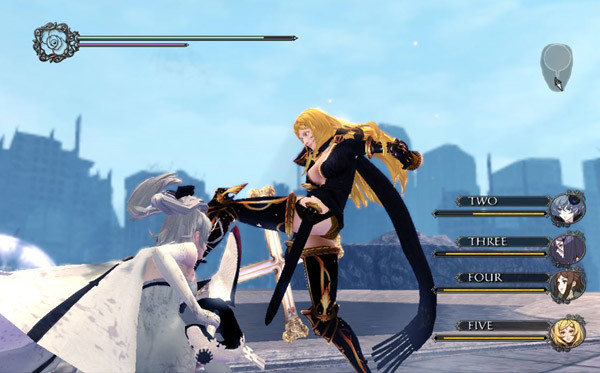
Of all the extras announced, the most interesting is the bonus level with a playable One. In fact, Dengeki PlayStation reports that the DLC will make all of Zero's five sisters playable, including poor ol' repressed fistfighter Four and lethargically doll-obsessed Three. Dengeki is vague on whether or not each of them will get her own stage. I predict a huge multiplayer Thanksgiving dinner where the whole family gets together and squabbles bloodily over Four's gluten-free zucchini bread.
BLAZBLUE VISUAL NOVEL COMING HERE, ALL BY ITSELF
As fighting games go, BlazBlue has an awful lot of storyline to it. In fact, it may have the most extensive story modes of any fighter out there, its only real competition being Persona 4 Arena. And no other fighting game has an entire visual novel spin-off localized for North America, so BlazBlue definitely wins in that department.
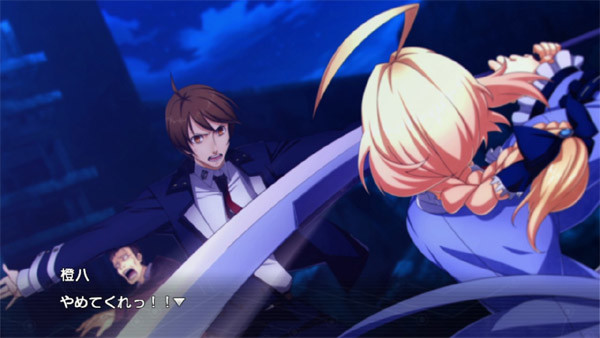
XBlaze Code: Embryo occurs some 150 years before the BlazBlue storylines that unfold in the actual fighting games, so most of its characters are new. Events wrap around a high-schooler named Toya Kagari, who finds himself the unwilling client of a mysterious girl named Es. Claiming she's there to protect him against otherworldly threats, Es joins Toya at his school, and the two meet a wealth of strange BlazBlue-caliber characters with names like Els von Klagen and Kuon Gramred Shuttleheim. As a visual novel, XBlaze has various story paths and endings, some of which connect to later BlazBlue events. It's due out for the PlayStation 3 and Vita this summer.
RUNE FACTORY TEAM LIVES ON THROUGH FORBIDDEN MAGNA
I ranted for a good while when Neverland Company, developer of the Rune Factory series, closed down last year, so it's nice to see some sign of them. Marvelous AQL unveiled the 3DS game Forbidden Magna and called it the work of some former Rune Factory staffers—which means Neverland Company expatriates, I think.
Forbidden Magna is a simulation RPG, the same classification given to the Rune Factory hybrids of farming and action-RPG. Which isn't to say that this is another Harvest Moon adaptation. Our first look at the game, courtesy of Famitsu, resembles a more arcane RPG, and the cast features one teenage hero named Lux and a pile of supporting heroines: Luz, Beatrice, Diana, and Charlotte. Nothing about the artwork stands out from the general anime-RPG buffet we have these days, but there may be more at work here if Neverland's spirit is pulling the strings.
KICKSTARTER REPORT: UNSUNG LANDS AND MORE
KickStarter remains a powerful force among many things, particularly video games. Perhaps someday the bubble will burst and we'll all feel stupid for giving thousands of dollars to a con artist who promised to make that long-awaited sequel to Day Dreamin' Davey, but until that happens Kickstarter will be a font of game projects that push new concepts, revive old ones, and look at the industry in notable ways. We've already seen Shadowrun Returns, Broken Age, the Tropes vs. Women: Video Games thing, and the dubious launch of the Ouya console. Some projects succeed, some fail, and some just turn into fascinatingly inept accidents and overpriced frauds. That's what makes it all so fun to watch.
UNSUNG STORY: TALE OF THE GUARDIANS
Status: Unfunded
Ends: This Friday
Unsung Story: Tale of the Guardians has a fine pedigree. It sees Yasumi Matsuno returning to strategy-RPGs, a field he so remarkably defined with Final Fantasy Tactics and Tactics Ogre. Nor does it hurt that Matsuno is also the mind behind Vagrant Story, Final Fantasy XII, and the recent short-subject Crimson Shroud, all compellingly scripted visions of medieval politics and dark fantasy. Unsung Story has much the same backdrop with its war-torn land of Rasfalia, though the actual game development falls to Playdek, a company more versed in bringing board-and-card games to mobile gadgets.
Yet the campaign didn't run all that smoothly. Confusion ensued over just how much of a role Matsuno had in the game, resulting in clarifications and assurances that he was “the visionary of the game, from mechanics to story” and that while he was not the director, he would “be involved throughout development.” Some complained that the Kickstarter took too long to explain itself, that the higher reward tiers were overpriced, and that it wasn't up-front enough about the fact that Unsung Story remains in development for the iOS and Android regardless of how the crowd-funding fares. The Kickstarter backs a version that'll run on PCs, Macs, and perhaps some other platforms.
Most detrimental, in my opinion, is that Unsung Story doesn't show enough of the promised game. The Kickstarter's featured artwork consists of non-committal fantasy vistas, with no identifiable characters in sight. The only story excerpt so far concerns a history of corrupt nobility and struggles for succession, not the tales of the neglected, humble bit-players who are supposedly the true focus of Unsung Story (hence the title). Matsuno's past games always framed their struggles through memorable characters, and Unsung Story so far offers no protagonists, no sign of equals to Ashley Riot and Ravness Loxaerion and Ashelia B'nargin Dalmasca.
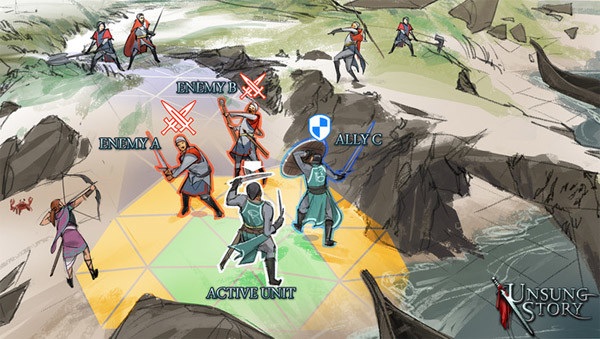
It's only recently that the Kickstarter dragged out some mock-ups of the game's battle system. Contrast this with the Mighty No. 9 proposal, which similarly promised to return a notable Japanese designer to his favored material. Mighty had artwork and imitation screens from the get-go, all promising a Mega Man revival in everything but name. It hit a $900,000 funding goal by the second day.
Yet as the funding deadline nears and Unsung Story sits about $100,000 from its goal, the game looks better and better. Artist Akihiko Yoshida, who was part of Matsuno's creations from Ogre Battle to Final Fantasy XII, joined the project as a character artist. Composer Hitoshi Sakimoto, another frequent Matsuno ally, is now covered by the Kickstarter's regular funding after spending most of the pitch as a stretch-goal participant. The new mock-ups of the battle system's six-way commands are an intriguing variant on the four-way layouts of Tactics games, and the web of character classes and sub-classes has just about everything a strategy-RPG could need.
Despite the setbacks, Unsung Story is exactly what Matsuno fans have wanted for years: a strategy-RPG with his characteristic attention to grim, complicated plots and even grimmer and more complicated battles. Some details are still cloudy, but with both Yoshida and Sakimoto aboard, it's really hard to refuse.
OUTERLANDS: SEASON ONE
Status: Unfunded
Ends: This Saturday
Outerlands is hardly the first documentary to take on this stretch of nerdery labeled “video-game culture,” but it has a good idea: six episodes focused on lesser-spotlighted sides of gaming. The producers' credits include the I Am Street Fighter documentary as well as the cherished old 1Up Show, and the preview footage looks darned professional.
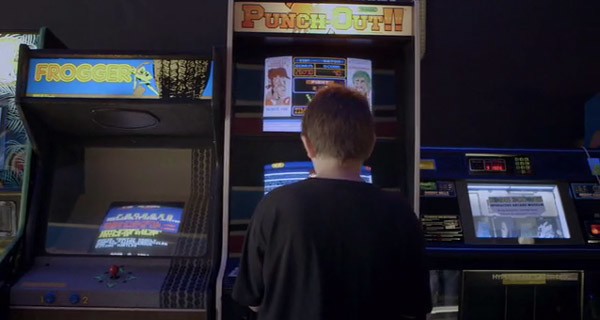
The pitch video showcases arcades and game preservation, while a longer clip tours the magazine archive of Lost Levels founder Frank Cifaldi. He reads a rare Super Mario Bros. review and…well, basically offers his library to any entity willing to cart it off and preserve it. That's a fascinating contradiction of the typical collector mindset.
Some would-be backers may balk at the fact that Outerlands isn't an actual game. Others might refuse to support anything linked to Fez creator Phil Fish, source of Twitter tantrums and derogatory opinions on Japanese games. I wouldn't let that stand in the way of supporting Outerlands. The idea is sound, the backer rewards are nice, and maybe the longer episodes will have Frank reading that old GamePro review that gives Trouble Shooter a perfect score.
BLACKMORE
Status: Unfunded, but hey, it just started
Ends: March 12
Blackmore is a steampunk version of…wait, wait! Come back, please. I know that steampunk is a terribly abused cliché from tabletop games to Nebula-nominated novels, but let's look at all that Blackmore has behind it. The Kickstarter is headlined by Jeremy Blaustein, whose fine localization work can be seen in Metal Gear Solid, Valkyrie Profile, Shadow Hearts Covenant, and several other classics. Yet it's Hideo Kojima's cyberpunk adventure Snatcher that Blaustein brings up the most in his Kickstarter introduction, and it's Snatcher that influences Blackmore and the team behind it.
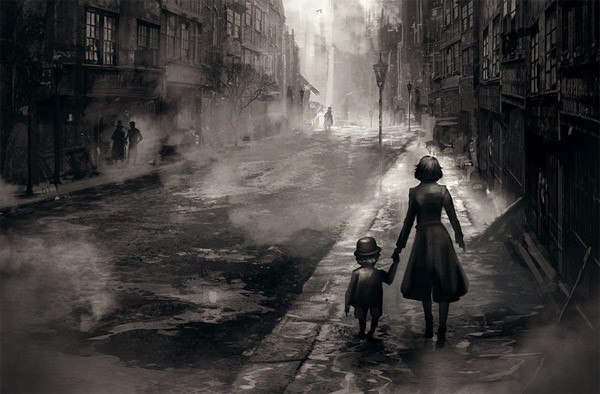
Aside from Blaustein, Blackmore's staff includes two names from Snatcher and other Konami offerings. Character designer Satoshi Yoshioka also worked on Policenauts, The Adventures of Batman and Robin, and even that Deadly Arts Nintendo 64 fighting game (which had some not-bad character design). Composer Motoaki Furukawa helped score titles for the Contra, Gradius, and Castlevania series, not to mention Policenauts. Blaustein also brought aboard two familiar voice actors: David Hayter and Jeff Lupetin.
Blackmore unfolds in the tumultuous times of 1888, following a young doctor named Emma Blackmore. A gruesome murder spurs her and her clockwork robot Descartes to investigate throughout the squalid underscape of London, and their adventure follows the flow of a point-and-click adventure, complete with “2.5D” graphics. The Kickstarter page doesn't offer any mockup screenshots so far. It's just some fairly nice artwork. Still, there's nearly a month of time for Blaustein to put together some better images of Blackmore. And there's plenty of reason to keep an eye out for them.
LA-MULANA 2
Status: Unfunded
Ends: February 22
The original La-Mulana was a brutal throwback, an indie action-platformer that disguised a punishing adventure. It was a bit of a cute 8-bit Indiana Jones on the surface and a bit of a harsh Metroidvania beneath it, and it attracted quite a fan following. The original's developers, NIGORO, hope to pull the same trick with a sequel .
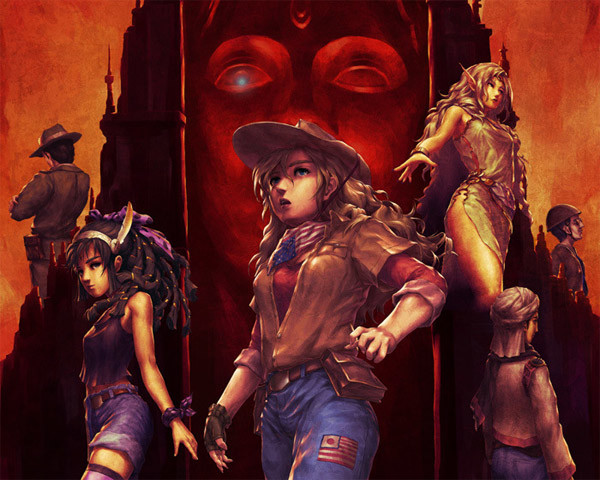
La-Mulana 2 sends explorer Lumisa Kosugi through the ruins of Eg-Lana, a hazardous labyrinth where monsters lurk and the standard fire-and-ice stage is actually combined into one. It all looks superbly faithful to the original game, and the backer rewards are nice. They should be, because a La-Mulana game isn't all that nice to the player. That's the way they like it.
NEXT WEEK'S RELEASES
DONKEY KONG COUNTRY: TROPICAL FREEZE  Developer: Retro Studios
Developer: Retro StudiosPublisher: Nintendo Platform: Wii U Release Date: February 21 Missing: Stanley the Bugman MSRP: $49.99 Nearly twenty years ago, a game called Donkey Kong Country awed the industry with its computer-rendered looks and put the Super NES ahead of Sega's Voltron-ish conglomerate of 16-bit systems. Donkey Kong Country: Tropical Freeze probably won't have the same impact. But it doesn't need to. Its path is already paved by the older Donkey Kong Country games and Retro Studios' well-received Wii outing, Donkey Kong Country Returns. Much like Donkey Kong Country Returns, Tropical Freeze presents a side-scroller with a modern coating. Donkey Kong remains the player's primary avatar, but he's partnered with several helpful allies, all of whom have the decency not to extoll their powers in a hip-hop number akin to that of Donkey Kong 64. Diddy Kong returns with his jetpack, and Tropical Freeze adds the propeller-haired Dixie Kong and the cane-wielding Cranky Kong, who pogo-jumps around like he's Scrooge from DuckTales or something. The four of them hop across a frozen archipelago to defeat a conquering force of Snowmads, though Tropical Freeze certainly isn't about a deep-running plotline. It's about the islands and all of the goofball challenges they offer: mine-cart rids shift perspective and dodge Lost-like bits of plane wreckage, giant beer steins belch out enemies, ape heroes scale giraffe necks like palm trees. Donkey Kong can swim a bit more effectively than in past side-scrollers, and Tropical Freeze also lets him pluck items and enemies to throw, all in the spirit of Super Mario Bros. 2. It promises a fine repackaging of Nintendo's particular brand of platformer, even if it can't win any wars.
|
EARTH DEFENSE FORCE 2025  Developer: Sandlot
Developer: Sandlot Publisher: D3 Publisher Platform: PlayStation 3/Xbox 360 Release Date: February 18 Needs: Giant House Centipedes MSRP: $49.99 The Simple series was a long-running standard of low-priced, low-budget games, covering everything from billiards to ambulance chases through zombie-infested streets. The more absurd Simple games got attention outside of Japan, but those who imported them ended up dismayed at the quality. Yet from this legion of mediocrity arose the Earth Defense Force series, a perpetually improving chronicle of mankind's high-tech war against giant bug invaders. Earth Defense Force 2025 summons up yet another arthropod onslaught, this one from deep underground, and sets loose players to fend it off in city streets and towns. Soldier categories from previous games are revised and expanded into four classes: the basic Ranger troopers, the supportive Air Raiders, the heavily outfitted Fencers, and the flying, curiously all-female Wing Divers. These classes wield sniper rifles, lasers, rocket launchers, air-strike targeters, and those standard-issue assault rifles. Weapons level-up as players use them, and there's a multitude of vehicles to commandeer, including tanks, motorcycles, armored personnel carriers, and a railgun mount. Reserving the game gets you its most absurd weapon: a giant inflatable decoy shaped like a hostess from Dream C Club. Apparently the gargantuan, city-razing spiders are suckers for dating sims. The Earth Defense Force games can be enjoyed solo, but they're famed for their multiplayer assaults. The 2025 edition offers online cooperative modes for four players, offline modes for two, and corresponding versus modes. This sort of game is always better with someone to sit in the sidecar.
|
STRIDER 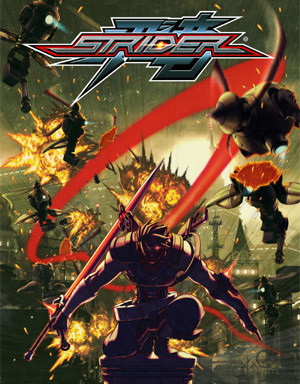 Developer: Double Helix/Capcom Osaka
Developer: Double Helix/Capcom Osaka Publisher: Capcom Platform: PlayStation 3/Xbox 360/PlayStation 4/Xbox One/PC Release Date: February 18 Best Strider: Mariya MSRP: $14.99 Strange that Strider wasn't a smash hit in arcades back in 1989. Manifold side-scrollers came and went, but Strider had a remarkable style to it, a cinematic allure that offered one insane setpiece after another. Players might duel with a giant robo-gorilla one minute, spin around an anti-gravity satellite the next, and then hear the multi-lingual babble of defeated bosses. But no, it was the less-inspired arcade beat-'em-ups that got the rampant fans, the cultural significance, the dreadful live-action movies starring Alyssa Milano with a bleached bob-cut. That hair should've been Strider's. Fortunately, Capcom stages a Strider comeback at least once a decade. Developer Grin's planned reboot was canceled in 2009, but Capcom recruited Double Helix for another attempt at updating Strider. Their take, simply called Strider, drops the daring pseudo-ninja Hiryu and his laser sword (and his new hologram scarf) into a retelling of the original game. As Hiryu dashes through Kazakh City in search of the villainous Grandmaster Meio, levels unfold like a Metroidvania in time with newly discovered abilities. A charge move might crack open locked doors, while a flame power-up could ignite more than the vicious arc of Hiryu's cipher. This new Strider may recast the original game's storyline in a more compact setting, but it's willing to pull from other pieces of Strider's past. There's no sign yet of the conspiracies and continent-hopping that made the NES Strider compelling, but a glimmer of the game lives on in the modern Strider's explorative pace. Capcom's 1999 sequel also contributes, as Hiryu controls like a smoother version of his Strider 2 incarnation, and the first impressive boss he encounters is a flying robot-dragon straight out of the same game's city stage. I reserve the right to complain when this modern Strider doesn't deliver a playable, flamethrower-toting Sheena, but I suspect that it'll satisfy Strider fans in other ways. |
TOMBA! 2: THE EVIL SWINE RETURN  Developer: Whoopee Camp
Developer: Whoopee Camp Publisher: MonkeyPaw Games Platform: PlayStation Network Release Date: February 18 A.k.a.: Tombi! MSRP: $5.99 The reappearance of Tomba 2 led me to examine the roles video games allow pigs. They're rarely the good guys. And when they are, they're sidekicks like Pei'j in Beyond Good & Evil or the touchingly selfless Hamlet in Illusion of Gaia. Tomba 2 perpetuates such stereotypes with its horde of “evil swine,” who plague the game's wildman hero Tomba and curse his homeland with their porcine magic. Tomba 2 excuses this stereotyping in two ways. For one thing, it's a pretty good take on the side-scrolling platformer. Along Tomba's journey, he'll solve strange puzzles, fetch items for his townsfolk allies, and break free of his two-dimensional confines. Like its predecessor, Tomba 2 is a “2.5-D” platformer, and it uses polygon environments for more than just showpieces. Tomba also dons suits for various powers, including a squirrel getup that beat Mario to the punch by about ten years. Then there's the second mitigating element: a swine outfit that lets Tomba befriend pigs. So perhaps the game isn't so guilty of anti-pig bias after all. MonkeyPaw's release of Tomba 2 is, unfortunately, the Japanese version, and it may require a little outside help to decode the requests of villagers. But it's still a cheap way to check out a lesser-seen wonder of PlayStation game design. |
discuss this in the forum (41 posts) |
this article has been modified since it was originally posted; see change history